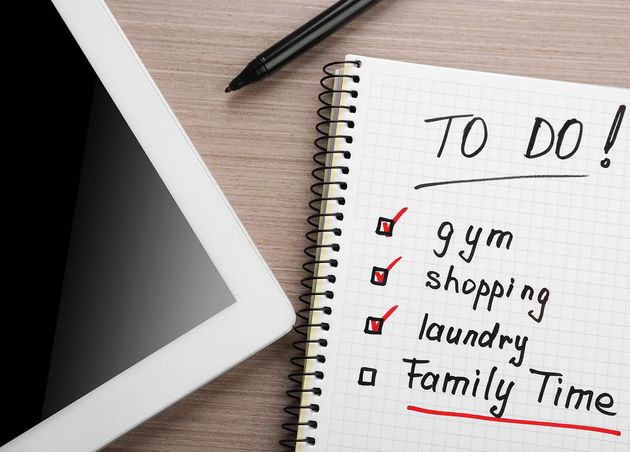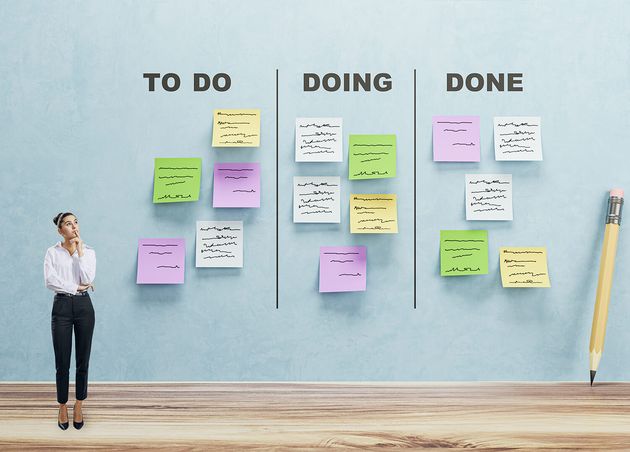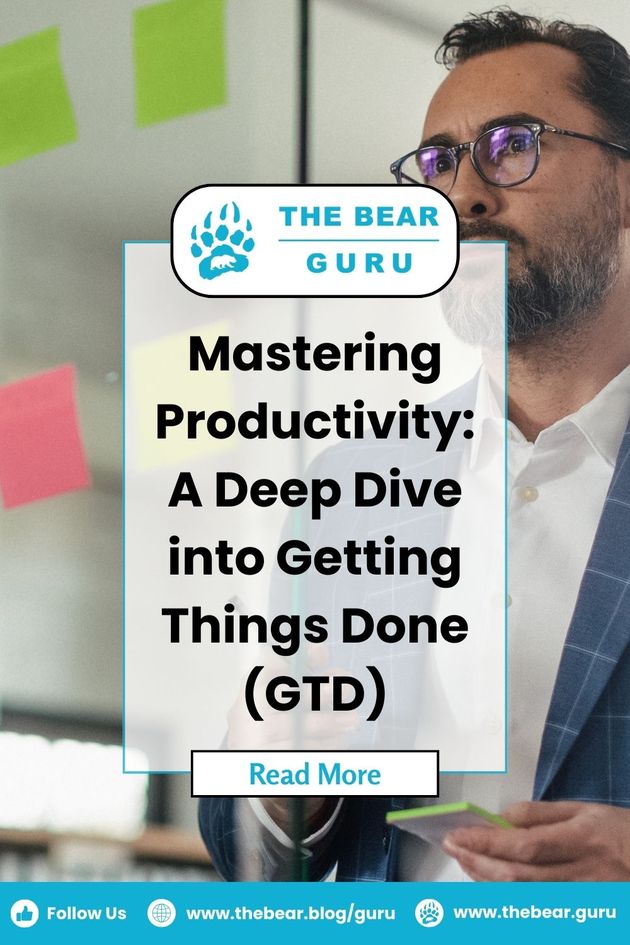Mastering Productivity: A Deep Dive into Getting Things Done (GTD)
Finding the path to genuine efficiency can aid in solving a challenging puzzle in a world full of constant distractions and expanding to-do lists. You may have tried various time-management strategies and tools. However, if you're genuinely seeking a method that organizes your efforts and instills a sense of tranquility, the Getting Things Done (GTD) technique could be particularly advantageous.
Getting Things Done, or GTD, is a productivity technique developed by David Allen that emphasizes the effective and efficient use of time. It's a system designed to assist you in capturing, organizing, and prioritizing your tasks and projects, enabling you to be more productive, focused, and less stressed.
GTD is based on the idea that by externalizing all your tasks and placing them into a trusted system, you can free up mental energy and concentrate on what truly matters.
The Master Specialty of "Capture"
The initial step in mastering GTD is to become a skilled capturer. Carry a journal or utilize a note-taking application to document any task, idea, or concern that comes to mind. By jotting them down, you can prevent these thoughts from bouncing around and causing unnecessary stress. Remember, capturing is not limited to work-related tasks; it's about capturing everything that occupies your mental space.
Coordinating Your World
Establishing an External Brain with "Clarify"
Once you've captured your tasks and thoughts, the "Clarify" stage becomes crucial. Examine the items you've captured and determine their significance. Is it significant? If so, proceed to the next steps. If not, it either becomes reference material or is discarded. This process transforms your captured information into an organized repository of tasks and thoughts.
The Power of "Organize"
After figuring things out, you move to the "Organize" stage. Categorize tasks based on contexts such as "Home," "Work," or "Projects." This context-focused organization ensures you can focus on tasks that align with your current environment or resources. Additionally, utilize tools like lists, folders, and digital applications to keep everything easily accessible.
As we delve deeper into the various components of the GTD method, stay tuned until the end of the article. Whether new to GTD or looking to refine your approach, these insights will help you transform how you approach efficiency and task management.
🏆 Business Fact
David Allen, a productivity consultant, created the GTD method. He first published his book on the technique in 2001, and it has since become one of the most popular productivity methods in the world.
Next Actions and Beyond
Defining "Next Actions"
In the GTD world, "Next Actions" are the heartbeat of efficiency. Instead of vague tasks, identify specific, significant steps to move a project forward. For example, rather than listing "Plan trip," break it down into "Research travel options" and "Book flights." This granularity allows you to make progress without feeling overwhelmed.
The "Waiting For" List
Do you find yourself waiting for a response or commitment from someone else? The "Waiting For" list prevents tasks from slipping through the cracks by tracking obligations you're currently dependent on. Whether it's awaiting a colleague's feedback or a friend's response, this list ensures you revisit it on a customized basis.
The Game-Changer: "Someday/Maybe"
Not all tasks require immediate action. Some are better suited for a later time frame. That's where the "Someday/Maybe" list shines. It serves as a repository for ideas and tasks you intend to explore in the future but don't require attention now. This list frees your mind from feeling pressured to address every idea promptly.
Context is Key
Why Context Matters?
Context is a crucial aspect of task execution. Your physical environment, tools, and available time influence your ability to complete tasks. By organizing tasks by context, you can enhance your efficiency. For instance, having a "Grocery" context while at the store helps you remember items to purchase.
Different Context Categories
GTD recommends using context categories like "Phone," "Computer," "Errands," and "Home." Assign tasks to the relevant context based on what's needed to complete them. You can efficiently handle calls or respond to messages when you have a few spare minutes and your "Phone" nearby.
Reviewing and Reflecting
- The Vital Habit of "Weekly Review"
- Regular review is the fuel that keeps your GTD engine running smoothly. Reviewing and reflecting are central to the "Weekly Review" habit.
- The "Weekly Review" is a dedicated time to assess your tasks, projects, and obligations. It's a moment to recalibrate, ensuring your priorities are aligned and your tasks are up-to-date.
- Adapting and Checking with "Daily Review"
- While the "Weekly Review" sets the tone, the "Daily Review" maintains the momentum.
- At the end of each day, take a few minutes to review what you accomplished, progress made on tasks, and what's pending for the next day.
- This practice fosters a clear understanding of where you stand and what's upcoming.
GTD for Teams and Collaboration
- Putting the Principles of GTD to Use in Teamwork
- GTD isn't just for personal productivity. Its principles can be seamlessly integrated into team workflows.
- Encourage your colleagues to capture tasks, clarify expectations, and organize responsibilities. This collaborative approach enhances transparency, accountability, and overall efficiency.
- Shared Projects and Responsibilities
- Collaborative projects can benefit from GTD principles.
- Assign tasks with clear next actions, use shared context labels, and implement regular reviews to ensure everyone stays aligned.
- By fostering a culture of organized collaboration, you empower your team to succeed collectively.
Digital GTD Tools
Harnessing Technology for Efficiency
In today's digital age, numerous tools can assist you on your GTD journey. Technology makes capturing, organizing, and completing tasks easier, whether through task management apps or note-taking platforms. Explore various applications to find the one that aligns with your workflow and preferences.
- Recommended Applications and Software
-
- Todoist
- A versatile task manager that helps you capture and organize tasks with due dates and priority levels.
- Todoist
-
- Evernote
- A note-taking app that allows you to create digital notebooks for organizing thoughts, reference materials, and more.
- Evernote
-
- Microsoft OneNote
- A robust platform for organizing and taking notes, ideal for keeping information in various formats.
- Microsoft OneNote
-
- Trello
- A visual task management tool that uses boards, lists, and cards to keep tasks organized and accessible.
- Trello
🏆 Business Trivia
The GTD method is based on the idea that the more information you mentally juggle, the less productive and focused you are. The technique helps you capture your tasks and thoughts in one place, freeing you to focus on execution.
Overcoming Common GTD Challenges
Dealing with Overwhelm
While GTD is designed to alleviate overwhelm, managing your GTD system is essential to prevent it from becoming another source of stress. Conduct a regular task review and adjust your priorities as needed. Remember, GTD is a tool to empower you, not a rigid system to constrain you.
Maintaining Consistency
Consistency is the key to GTD's effectiveness. Regularly practice capturing and processing tasks. Set aside time for your weekly and daily reviews, and stick to them. Mastering GTD requires practice like any skill, so be patient with yourself as you develop this beneficial routine.
Mastering GTD: Tips and Tricks
Start Small and Build
Implementing GTD doesn't require a complete overhaul of your habits. Begin by capturing tasks and processing them. Introduce new elements like context labels and regular reviews as you become comfortable. The journey is about progress, not perfection.
Incorporate GTD into Your Daily Routine
GTD is most effective when it becomes part of your lifestyle. Make it a habit to record thoughts and tasks. When you consistently apply the principles, you'll experience a shift in how you approach tasks, leading to increased efficiency and reduced stress.
GTD and Balance between Fun and Serious Activities
- Efficiency vs. Effectiveness
- GTD isn't solely about checking tasks off but achieving meaningful results.
- You can balance efficiency and effectiveness by focusing on what matters and making informed decisions about your next steps.
- This balance fosters a sense of accomplishment and allows room for personal growth.
- Finding Harmony in Your Life
- GTD's comprehensive approach extends beyond work.
- By becoming adept at capturing, clarifying, and organizing, you make room for personal goals, hobbies, and quality time with loved ones.
- The goal is to integrate your commitments with your interests, leading to a more fulfilling and intentional life.
Why Does GTD Work?
The success of GTD isn't just anecdotal; it's rooted in psychology. When you externalize tasks and thoughts, your brain no longer expends energy to remember them. This mental freedom allows you to focus on executing tasks rather than juggling ideas, resulting in increased productivity and reduced stress.
Reducing Mental Burden
GTD minimizes mental burdens by transforming mental clutter into organized external structures. When your mind isn't preoccupied with remembering every detail, you can think creatively, solve problems, and make informed decisions. This reduction in mental burden enhances your overall mental capacity.
The Getting Things Done (GTD) Philosophy is critical for efficiently managing diverse tasks and intricate projects. You'll be able to fully immerse yourself in the details of the most important tasks if you consistently engage in thorough reviews, meticulously process your collected inventory, effectively organize your tasks into a manageable structure, and comprehensively capture each task and idea.
This systematic approach grants you the significant ability to enhance your focus on essential tasks, ultimately leading to increased productivity. Embark on the journey of adopting GTD today and unlock its potential to guide you toward achieving more within the bounds of everyday life.
Recommended for you
Travel to Northern Thailand Guide: Everything You Need to Know
Dr. Theodore (Professor Bear)
Lumpini Park: Enjoying Leisurely Days in Bangkok
The Bear Team
Best Time to Travel Thailand: A Complete First-Timer's Guide
Dr. Theodore (Professor Bear)
Thailand Golf: Silky Oak Country Club in Rayong
The Bear Team
























